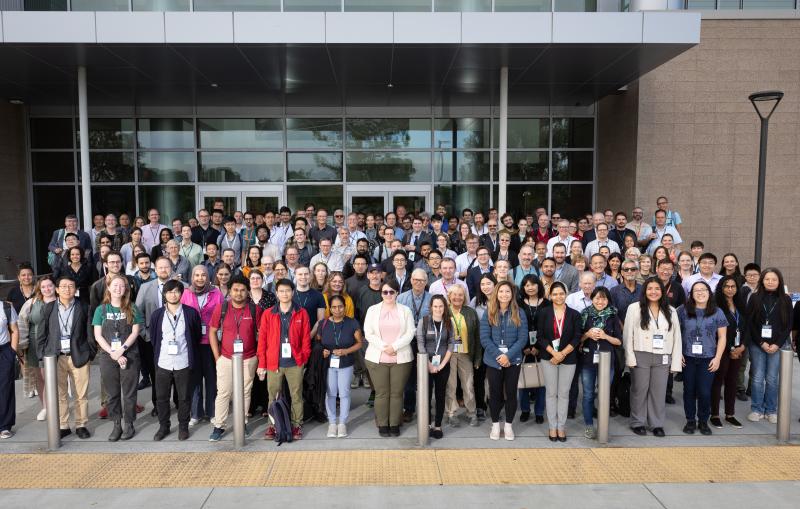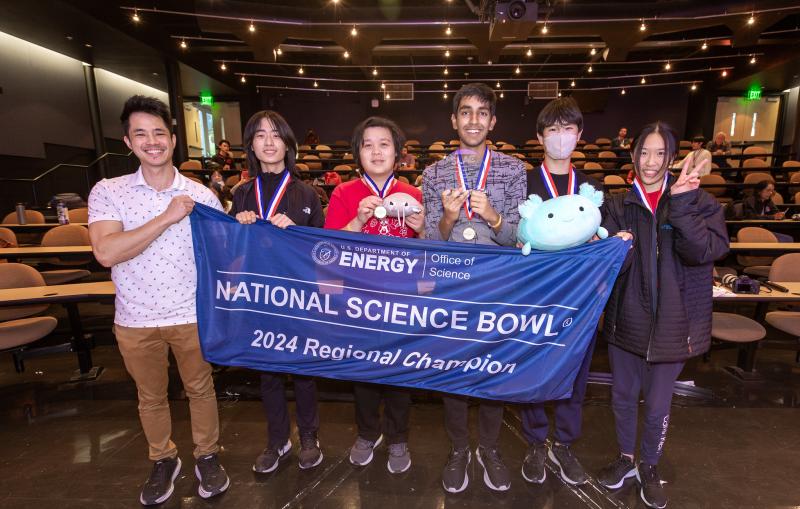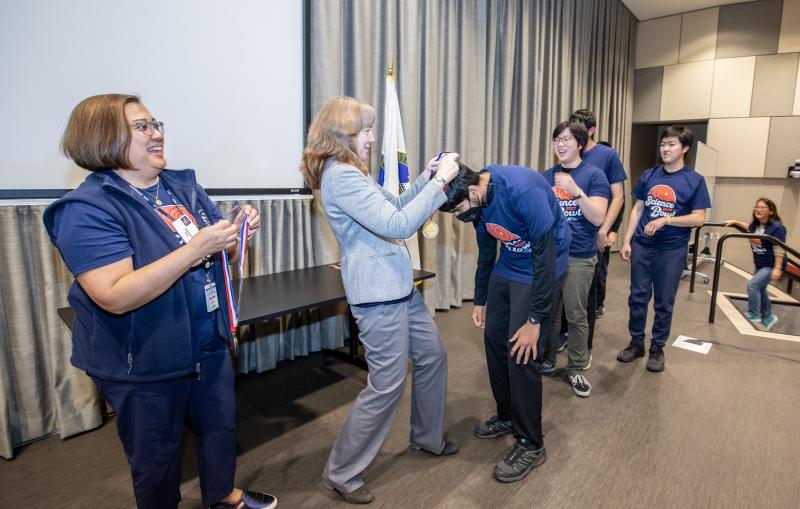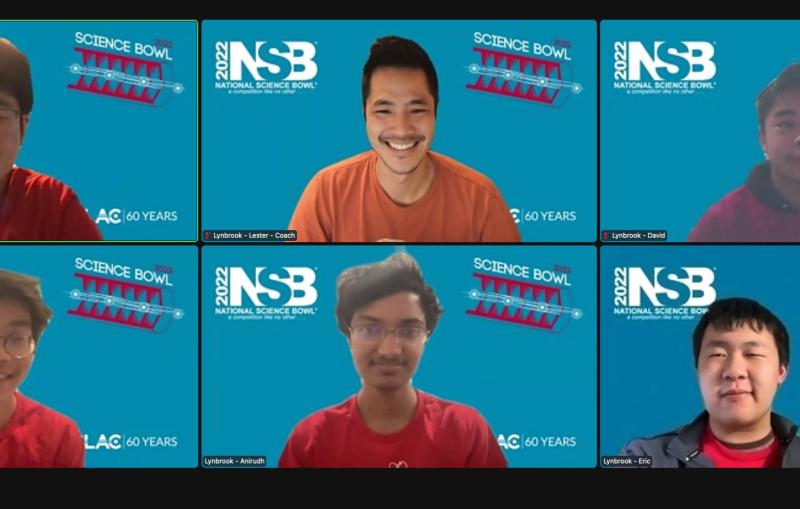SLAC hosts Secretary of Energy Jennifer Granholm for a virtual visit
She toured the lab’s powerful X-ray laser, looked at the construction of the world’s largest digital camera, and discussed climate research, industries of the future, and diversity, equity and inclusion in the sciences.
By Manuel Gnida
Secretary of Energy Jennifer Granholm stopped by the Department of Energy’s SLAC National Accelerator Laboratory for a virtual visit on July 8, where she met with staff and toured the lab’s research facilities online.
Highlights of the two-hour visit included behind-the-scenes looks at one of the most powerful X-ray sources on the planet and at the construction of the world’s largest digital camera for astronomy. She also joined presentations of the lab’s research in machine learning, quantum technology and climate science and engaged in discussions about diversity, equity and inclusion at SLAC.
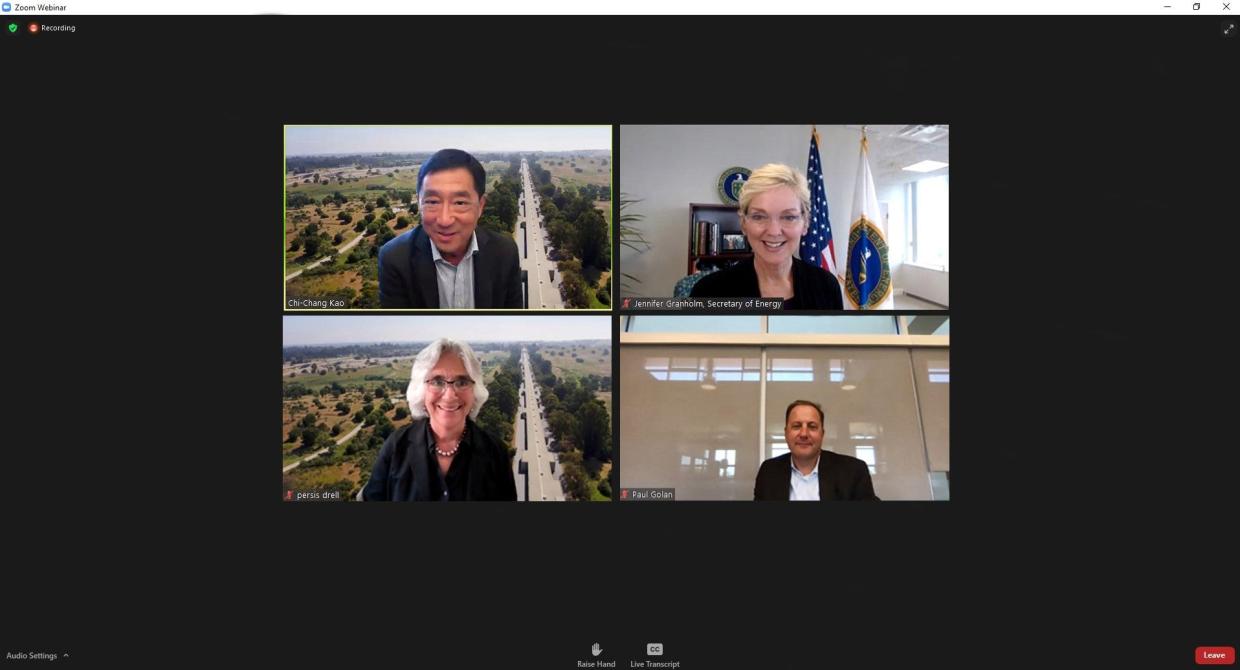
“We are honored to have Secretary Granholm joining us to learn more about SLAC’s suite of unique facilities, technologies and expertise and our work to advance the frontiers of innovation and discovery,” said SLAC Director Chi-Chang Kao. “We appreciate the opportunity to share some of what’s underway at the lab and its impact, today and for our future.”
Paul Golan, site office manager for DOE’s SLAC and Lawrence Berkeley National Laboratory, said, “SLAC was founded in 1962 as a single program lab, which produced the longest linear accelerator in the world. Over the course of time, SLAC has reinvented itself and transformed into a multidisciplinary lab, leveraging strong roots in Silicon Valley and a phenomenal partnership with Stanford University to support DOE’s mission and shape where we’re going in our science.”
After meeting with senior representatives from SLAC and Stanford, Granholm joined livestreamed tours that introduced her to the lab’s two flagship projects: the Linac Coherent Light Source (LCLS) X-ray laser and the LSST Camera for the future Vera C. Rubin Observatory.

LCLS works like a super-resolution X-ray microscope that lets scientists explore how our world works on the atomic level, providing unprecedented details that drive discoveries in chemistry, biology, medicine, energy research, materials science and more. The tour included a stop at the Matter in Extreme Conditions (MEC) experimental station, where scientists study high temperatures and pressures in materials, recreating conditions that exist inside stars and planets and could bring us a step closer to using nuclear fusion as a clean and sustainable energy source. The live tour of LCLS was complemented by an overview of LCLS-II, a superconducting upgrade to the X-ray laser that is scheduled to come online next year.
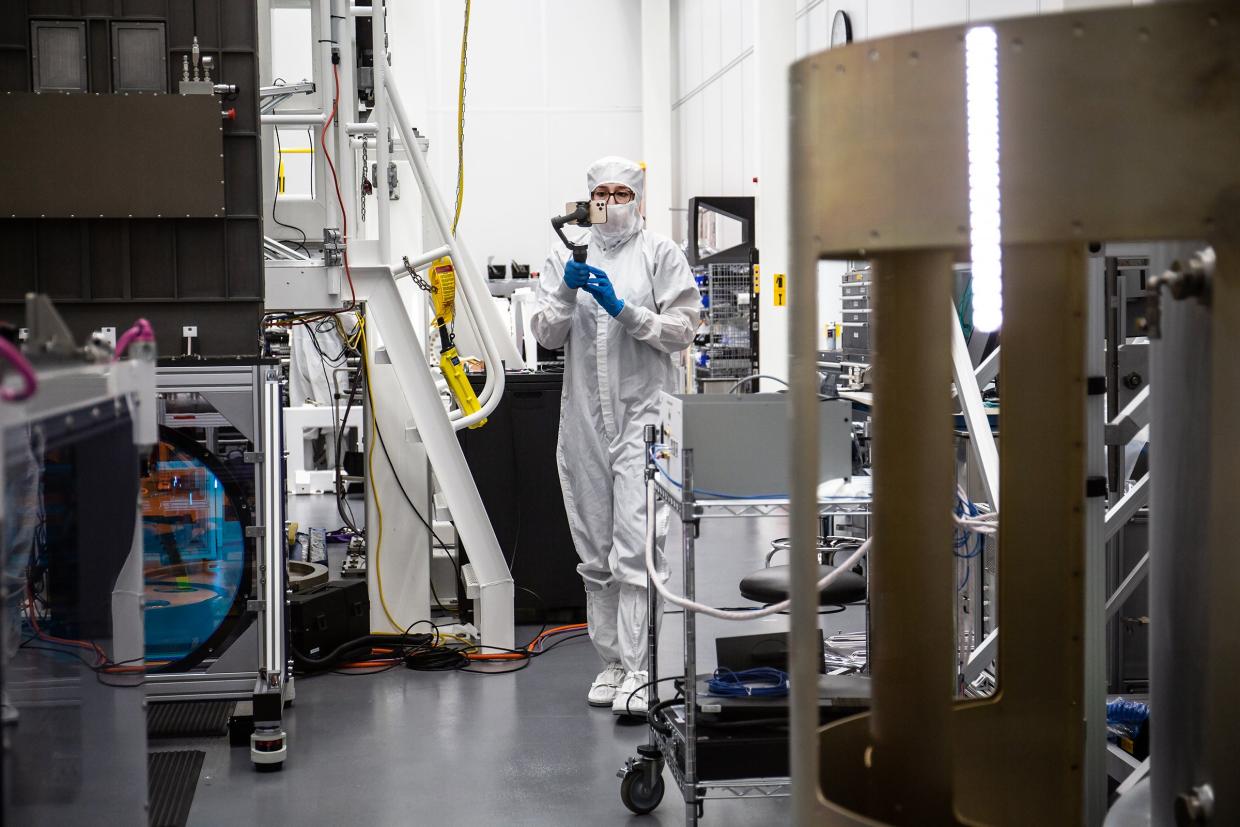
Granholm also visited the SLAC cleanroom, where crews are assembling the LSST Camera – the 3,200-megapixel digital eye of Rubin Observatory. As the centerpiece of the Legacy Survey of Space and Time (LSST), it will scan the entire visible southern sky every few days for a decade and produce a vast public archive of data that will advance our knowledge of the mysterious dark energy and dark matter that make up 95% of the universe, as well as galaxy formation and potentially hazardous asteroids.
In addition to touring the lab’s research facilities, the Secretary also met with SLAC and Stanford researchers who closely collaborate on addressing some of the world’s most pressing challenges and develop technologies that create new opportunities for society.
One of the most urgent challenges of our time is the sustainable generation of energy and products without depleting limited resources or accelerating climate change. The researchers described how SLAC and Stanford pursue this goal on many levels, from the development of next-generation rechargeable batteries to better ways of generating clean energy and stabilizing the electric grid.
Others spoke about how SLAC and Stanford are also partners for the development and exploration of machine learning and quantum technologies that will fundamentally change the way we live. At SLAC, scientists use machine learning to boost the performance of research facilities, study biomolecules and disease, reveal the properties of fundamental particles, discover new materials, and more. The efforts in quantum information science include the development of qubits and quantum algorithms for unprecedented computing and of ultrasensitive quantum sensors for detecting dark matter, just to name a few applications.
“The partnership between Stanford, SLAC and the DOE is a visionary framework for producing breakthrough science and technology, and a good partnership is crucial to success,” said Stanford Provost and Vice President for SLAC Persis Drell, who is also one of the lab’s former directors. “SLAC facilities play an incredibly important role in the critical science discoveries and inventions that will support the Administration’s bold goals, most notably in climate research. At Stanford, we believe that SLAC is so important – to our future as a first-ranked research university and to the nation’s future.”
Granholm also discussed another shared priority for the Biden Administration and the lab: the need for more diversity, equity and inclusion in research environments. Talking to SLAC’s newly appointed Chief Diversity Officer Natalie Holder and other lab representatives, the Secretary learned about existing programs and the lab’s strategy in that area.
The visit concluded with a livestreamed all-hands meeting, during which the Secretary addressed SLAC staff and answered questions.
“The scientists and researchers at SLAC are a big reason why I call the Department of Energy ‘America’s Solutions Department’,” Granholm said. “They’re deepening our understanding of how our world operates at the atomic level, unlocking new possibilities for better microchips and medicine and more. They’re driving forward battery technologies that this Administration’s clean energy agenda depends on. And they’re keeping the country at the cutting edge of machine learning, artificial intelligence, and quantum information science. With every new innovation they produce, every new boundary they push, and every breakthrough they reach, the folks at SLAC are fortifying our competitiveness and helping us build a safer, healthier, and more prosperous nation.”
Contact
For questions or comments, contact the SLAC Office of Communications at communications@slac.stanford.edu.
SLAC is a vibrant multiprogram laboratory that explores how the universe works at the biggest, smallest and fastest scales and invents powerful tools used by scientists around the globe. With research spanning particle physics, astrophysics and cosmology, materials, chemistry, bio- and energy sciences and scientific computing, we help solve real-world problems and advance the interests of the nation.
SLAC is operated by Stanford University for the U.S. Department of Energy’s Office of Science. The Office of Science is the single largest supporter of basic research in the physical sciences in the United States and is working to address some of the most pressing challenges of our time.


